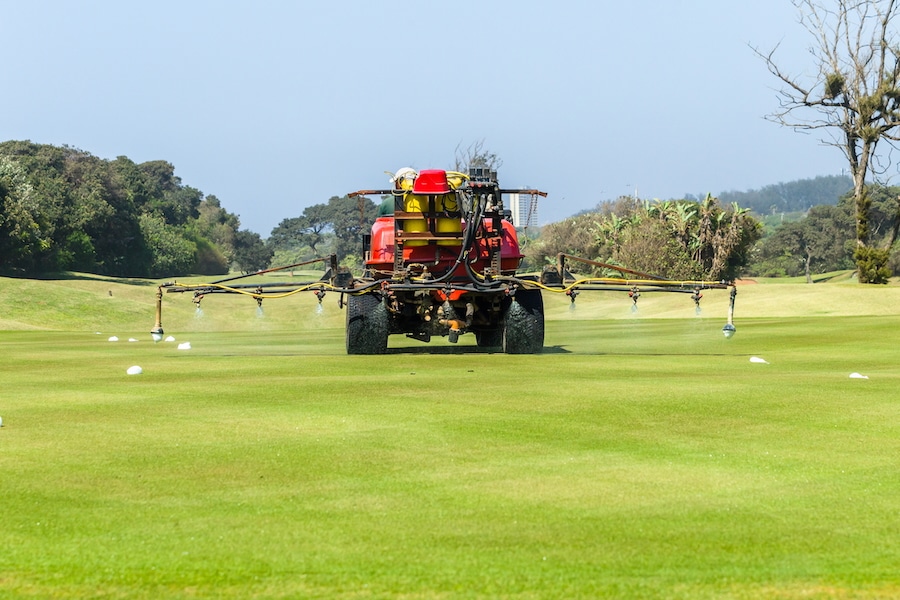This post was originally published on Eco Watch
In a new study, scientists are raising concerns over exposure to pesticides used on golf courses. According to the research, there could be a link between living within three miles of a golf course and an increased risk of Parkinson’s disease.
The study, published in JAMA Network Open, analyzed data from more than 5,500 people living in Minnesota and Wisconsin, including 419 people with Parkinson’s disease and 5,113 matched controls. They also analyzed proximity to 139 different golf courses and compared people living in areas with local drinking water systems that include golf courses and water systems without golf courses.
Researchers determined that living within one mile of a golf course posed the greatest risks, with a 126% increase in chance of developing Parkinson’s disease compared to people living six or more miles from a golf course. Anyone living within three miles of the golf course also had elevated risks of developing the disease, but the risk became less notable after three miles.
However, it is not just airborne exposure that could be an issue. Even living in an area that shares water services with a golf course posed greater risks of developing Parkinson’s disease, according to the study. The analysis showed that people living in a water service area that included a golf course had nearly twice the chance of developing Parkinson’s disease compared to those living in water service areas without a golf course and a 49% higher chance compared to people living on properties with private wells.
The researchers suggested that the chemicals applied to golf courses could be the reason for higher risk of developing Parkinson’s disease, especially as these chemicals can leach into the groundwater. Common pesticides used on golf courses include chlorpyrifos and maneb, both neurotoxins, Psychiatrist.com reported.
Lead author Brittany Krzyzanowski, an assistant professor at Barrow Neurological Institute, told Medscape Medical News that the population-based study was observational, though, and those living near golf courses are not advised to just pick up and leave. More research is needed to prove any causal relationship, but the study findings can help individuals minimize their risks and encourage policymakers to address pesticide use.
While the study authors acknowledged geographical and population limitations to the study, other experts have cautioned people to consider other limitations that could impact the research.
“Parkinson’s starts in the brain 10-15 years before diagnosis and the study didn’t only use subjects who permanently lived in the area,” David Dexter, director of research at Parkinson’s UK, said in a statement. “This would not only affect participants’ exposure, but also suggests their Parkinson’s could have started before they moved around a golf course.”
However, even with the limitations, this potential link between proximity to golf courses and risk of developing Parkinson’s disease has scientists urging officials to reconsider methods of maintaining golf courses to better protect public health.
“These results raise concerns about how chemicals applied for aesthetics may silently shape neurological health,” Michael Okun, professor of neurology at the University of Florida and a medical advisor at the Parkinson’s Foundation, told Medscape Medical News. Okun said that use of pesticides on golf course could be leaching into water supplies, creating “a hidden hazard we can no longer ignore.”
The post Living Near Golf Courses Linked to Higher Parkinson’s Disease Risk, Possibly From Pesticide Exposure appeared first on EcoWatch.





0 Comments